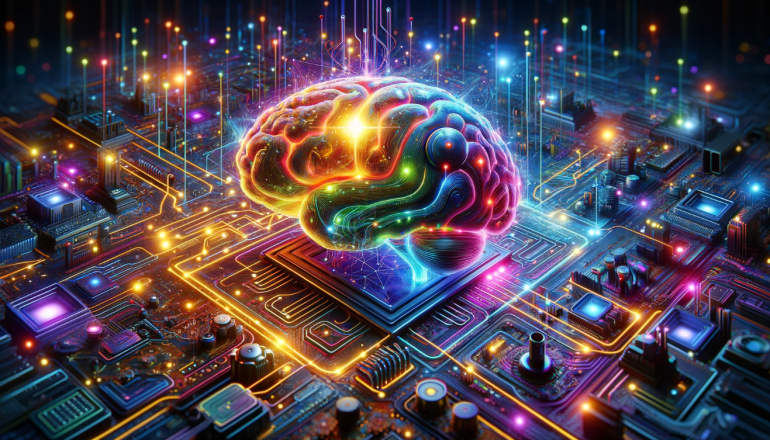- The AI market is projected to reach $184 billion by 2024, reflecting its pervasive influence in reshaping daily routines.
- Despite historic anticipation of humanoid household robots, AI integration has manifested through virtual assistants like Alexa and Siri, revolutionizing home automation.
- Forecasts suggest that by 2033, robots could automate nearly 40% of household chores, with AI poised to transform grocery shopping as well.
- Ethical considerations and privacy implications constrain the automation of caregiving tasks, despite AI’s technical capabilities.
- The AI sector is a significant driver of global economic growth, with forecasts predicting a market value of $826 billion by 2030.
Main AI News:
The artificial intelligence (AI) market is on a trajectory to hit $184 billion by 2024, reflecting the pervasive influence of AI in reshaping our daily lives. While we often anticipate groundbreaking advancements in AI and their transformative impact on the future, it’s crucial to recognize that AI is already deeply entrenched in numerous facets of our existence, fundamentally altering how we work, relax, and engage in leisure activities.
For decades, media narratives have spotlighted the emergence of humanoid robots poised to revolutionize household chores, evoking visions of futuristic aides like Mabel The Robot Housemaid, anticipated as early as 1976. Although Mabel never materialized, AI has seamlessly integrated into our lives, with virtual assistants like Alexa, Siri, and Cortana becoming ubiquitous fixtures in many households. While these digital helpers may not tackle tasks like ironing, they adeptly manage home automation, from adjusting lighting and programming appliances to regulating heating systems, enhancing convenience and efficiency.
Forecasts indicate that by 2033, robots could automate nearly 40% of household chores, echoing predictions reminiscent of those from 1966, albeit substantiated by contemporary data from institutions like Japan’s Ochanomizu and the UK’s University of Oxford. However, the scope of automation extends beyond domestic chores, with grocery shopping poised to undergo significant AI-driven transformation. Experts project that by 2033, AI will conduct nearly 60% of grocery shopping tasks, underscoring the expanding role of automation in daily life.
Yet, certain tasks, such as caregiving for the elderly or children, are less amenable to automation due to ethical considerations and potential developmental impacts. While AI possesses the technical capacity for such responsibilities, concerns regarding child development and privacy implications render their delegation to machines contentious.
In light of the burgeoning market size, AI constitutes a substantial segment of the global economy, projected to reach $184 billion by 2024 and poised for exponential growth thereafter. By 2030, forecasts anticipate a staggering market value of $826 billion, underlining the sector’s pivotal role in driving economic expansion.
AI permeates various aspects of our lives, revolutionizing how we interact with technology and navigate daily routines. From unlocking smartphones with facial recognition to personalized online experiences driven by AI algorithms, its influence is pervasive. Social media platforms leverage AI to curate personalized content, combat misinformation, and enhance user experiences. Moreover, AI-powered tools like spell checkers and spam filters streamline communication and bolster cybersecurity, exemplifying AI’s multifaceted utility.
One of the most conspicuous shifts in recent years is the widespread adoption of digital voice assistants, such as Siri, Alexa, and Google Home. These assistants leverage natural language processing and AI-driven algorithms to provide tailored assistance and information retrieval, seamlessly integrating into daily activities.
While the futuristic vision of robots like Mabel remains elusive, our homes are evolving into “smart” environments, equipped with AI-enabled devices that optimize convenience and functionality. From smart thermostats to intuitive refrigerators capable of generating shopping lists, AI-driven innovations continue to redefine domestic living.
As we navigate the ever-expanding landscape of AI integration, the prospect of transformative advancements looms large, promising to reshape our lives in ways once thought unimaginable. While the vision of fully autonomous robotic aides like Mabel may remain aspirational, the reality of AI’s pervasive influence underscores its status as an indispensable force shaping the future of humanity.
Conclusion:
The pervasive integration of AI into daily life not only transforms how individuals interact with technology but also drives significant market growth. With forecasts indicating exponential expansion, businesses across sectors must adapt to capitalize on AI-driven opportunities, leveraging its transformative potential to innovate and enhance consumer experiences.

